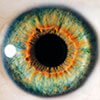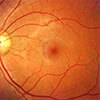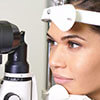Understanding Your Vision
How your eye treats light rays as they enter the eye determines if you have normal eyesight. If your eye doesn’t bend or refract light properly, then you may have one of the problems listed below.
Astigmatism
Astigmatism describes the inability to focus clearly at any distance. Light rays enter the eye through a misshapen cornea, which causes light to focus at different points away from the retina. Astigmatism may be combined with myopia and hyperopia.
Hyperopia (farsightedness)
Hyperopia occurs if you see distant objects somewhat more clearly than objects close to you. Light rays entering your eye focus behind the retina, blurring near images or, sometimes, all images.
Myopia (nearsightedness)
Myopia occurs if you see near objects more clearly than those far away. Light rays entering your eye focus in front of the retina, blurring distant images. Myopia is the most common vision problem in North America, affecting about 25 percent of the people.
Presbyopia
A normal part of aging that begins for people ages 40 to 50, presbyopia occurs when the lens of the eye loses flexibility. This results in an inability to change focus and see close up.
Most people who are nearsighted, farsighted or astigmatic can obtain excellent results through LASIK vision correction. Laser surgery does not correct presbyopia.









